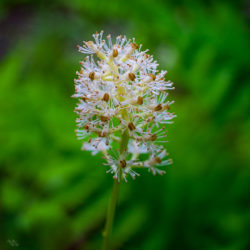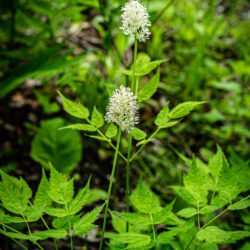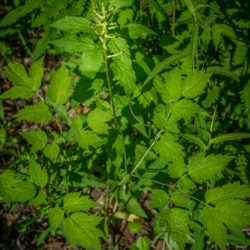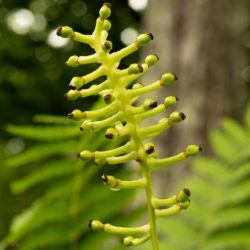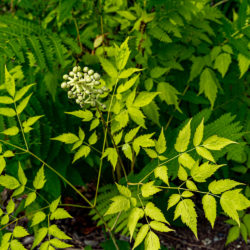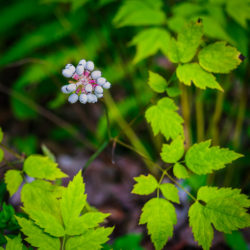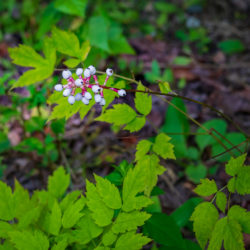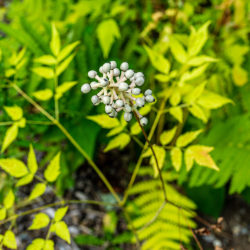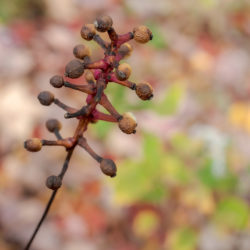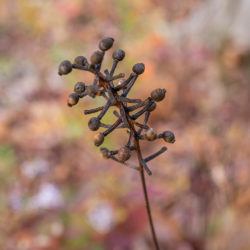Etymology
Actaea is the Latin name for the genus originally attributed to Pliny, and accepted by Linnaeus, and pachypoda is Latin for thick foot, referring to the thickened pedicel (stalk) of the flower and fruit.
Garden Uses
Lovely naturalized in shady areas of woodland or shade gardens, but poisonous! As berries are not eaten by wildlife, they tend to be attractive through to frost.
Overview
Herbaceous perennial growing 1 to 3 feet tall in moist, humus-rich areas of shady to partly shady woodlands. Berries, roots, and probably herbaceous parts of plant are all poisonous to humans. A rarer form has pink or red berries; while formerly called Actaea pachypoda forma rubrocarpa, it is now thought to be a sterile, naturally occurring hybrid with the related native species Actaea rubra (red baneberry).
Leaves and Stems
Leaves are compound, alternate, thrice divided, and deeply saw-toothed. They usually grow two or three per stem, each from a separate node. Stems are branching, slender, and upright. Plants are 2-3 feet wide. Stems turn attractively red and thicken as white berries mature.
Flowers
Blooms in May-June with white, small, and fragrant flowers growing in elongated globular clusters on long stems above the foliage. The stigma is 1.5 to 3 mm, protruding past the cleft petals.
Fruit/Seed
Small (5-9 mm), white berries in a long-lasting, elongated but poisonous cluster. Each berry has a persistent purplish ‘eye’ formed by the persistent stigma. Seeds 3-4 mm.
Animal Associates
Wildlife tend to avoid this plant, presumably due to toxicity.
Propagation
Root division in early spring or fall, or by seeds sown 1/2-inch deep as soon as ripe. Seeds would then be expected to germinate the following year, and flower the third year. Use care when handling seeds and roots.
Garden Location
Performance Hall Garden (see garden map)
Sources
Lady Bird Johnson Wildflower Center
Plant Profile by Kate O'Dell

